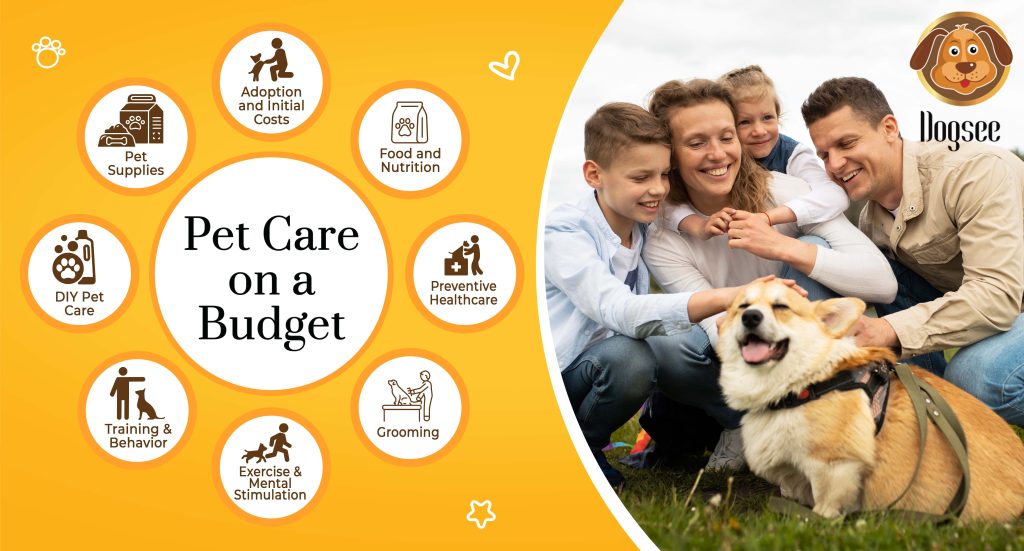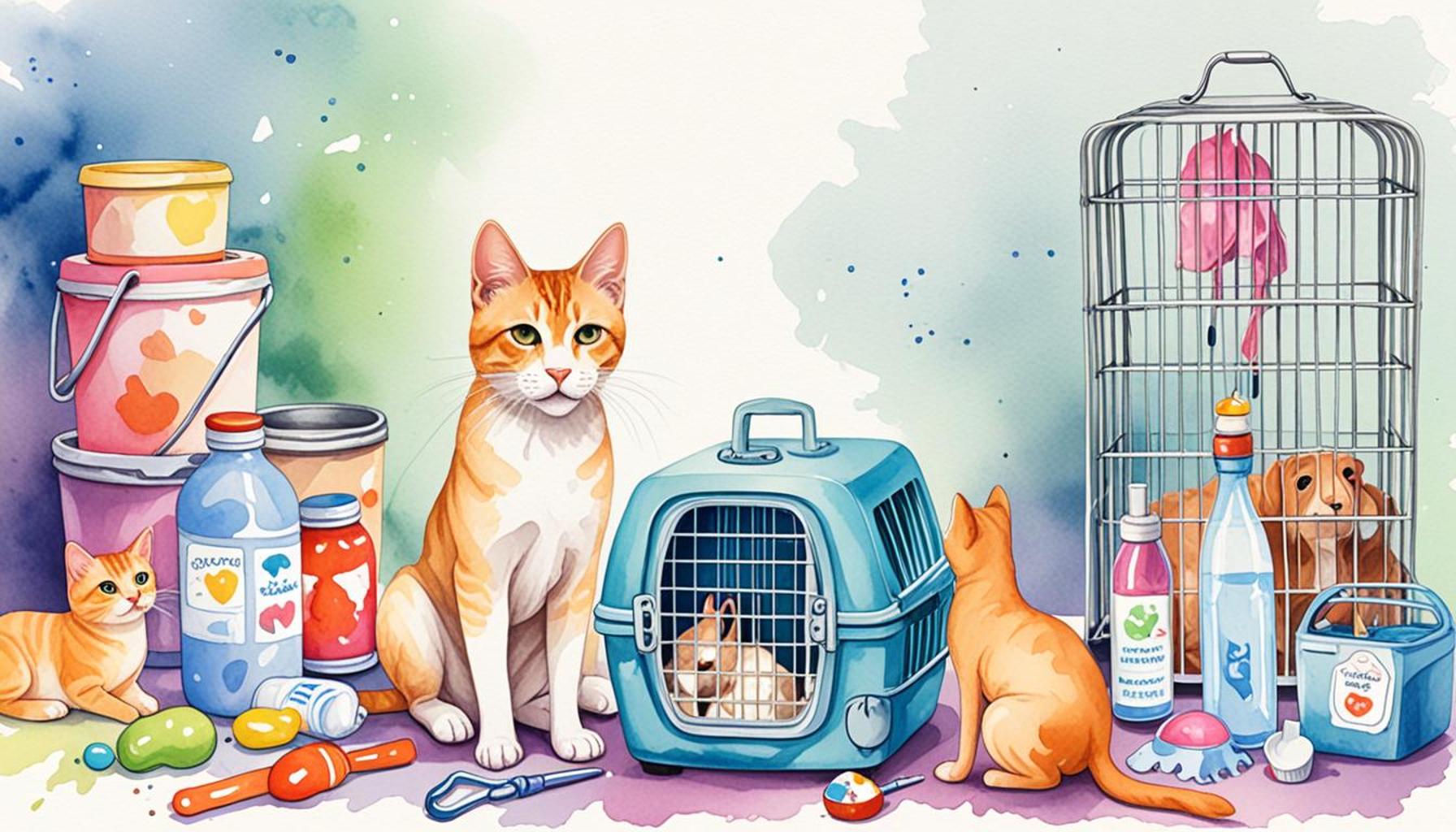Financial resources for pet adoption: How to help with care and food costs

The Financial Responsibilities of Pet Ownership
Bringing a pet into your home can undoubtedly enhance your life with joy, loyalty, and unconditional love. However, the journey of pet ownership is not without its challenges, particularly when it comes to the financial responsibilities associated with caring for an animal. From food and veterinary care to grooming and training, understanding the full scope of these costs is crucial for any prospective owner.
In the United States, the average annual cost of owning a medium-sized dog can range from $1,500 to $3,000, depending on factors like breed, size, and health conditions. For cats, costs generally lie between $800 to $2,000 annually. These figures, however, can vary notably in urban areas versus rural settings, where vet fees and pet supply options differ significantly. It’s essential to budget smartly and prepare for these expenses before adopting a pet.
Financial Assistance for Pet Ownership
Fortunately, there are numerous resources available to assist with the financial burden of pet care. Here are a few options:
- Grants and scholarships: Various organizations, such as the Petfinder Foundation and the Humane Society, offer grants specifically for pet adoption and care costs. These funds can help cover the adoption fees or initial medical expenses, making it easier to welcome a new furry friend into your home.
- Fundraising platforms: Websites like GoFundMe allow pet owners to create campaigns to raise funds for specific needs like vet bills or emergency care. This community-driven approach can help alleviate unexpected financial burdens. Moreover, sharing these campaigns on social media often brings in significant community support.
- Community resources: Local non-profits and shelters frequently offer programs aimed at minimizing costs for pet owners. For instance, organizations like ASPCA provide low-cost or free spay and neuter services, vaccinations, and even food pantries for pets struggling in financially challenged households.
Additionally, many pet supply stores have loyalty programs or offer discounts for bulk purchases of food and supplies. Stores such as PetSmart and Petco often have rewards programs that can lead to significant savings on essential items over time.
By actively exploring these various resources, potential adopters can significantly ease the financial strain associated with pet ownership, thereby fostering an environment for a happier, healthier life for their new companions. Taking the time to understand these options not only prepares you for a successful pet adoption journey but also ensures the well-being of your future furry family member.

LEARN MORE: Click here to understand your dog’s behavior
Exploring Subsidized Veterinary Care
One of the most critical expenses for a pet owner lies in providing necessary veterinary care. Routine check-ups, vaccinations, and emergency services can add up quickly, making it vital to explore options that can help reduce these financial pressures. Fortunately, various subsidized veterinary services exist across the United States, allowing pet owners to access quality care without breaking the bank.
Low-Cost Clinics: Many non-profit organizations and animal shelters operate low-cost clinics that provide essential veterinary services. These clinics typically offer vaccinations, wellness exams, and spay/neuter procedures at reduced rates. The Best Friends Animal Society and local humane societies often run such programs, aimed at ensuring every pet receives the care it deserves, regardless of its owner’s financial situation.
Government Assistance: Some states have initiated programs to support pet owners struggling with veterinary costs, particularly in vulnerable populations. Programs like the Veterinary Care Initiative in Florida provide funds for low-income families to access essential pet medical care. Exploring local resources can uncover similar initiatives in your region, which can alleviate the expense of medical care for your furry friend.
Pet Insurance: A Safety Net for Your Finances
Though it may seem like an additional expense, investing in pet insurance can prove beneficial in the long run. Much like human health insurance, pet insurance plans can cover a significant portion of unexpected veterinary costs, thus reducing the financial burden you might face during emergencies. With various carriers offering different plans, selecting one that best suits your pet’s needs and your budget is essential.
Comparative Costs: When examining pet insurance options, consider comparing multiple providers. Some well-known pet insurance companies in the U.S. include Trupanion, <a href="https://www.onemainfinancial.com/pet-insurance/ Healthy Paws, and PetInsurance.com. It’s crucial to look at monthly premiums, deductible amounts, and reimbursement rates to find a plan that aligns with your financial expectations while ensuring comprehensive coverage for your pet.
- Preventative Care: Many insurance policies include coverage for routine care, including vaccinations, dental cleanings, and wellness exams. This can minimize your out-of-pocket expenses for regular visits.
- Emergency Coverage: In case of unexpected accidents or illnesses, pet insurance can reimburse you for significant expenses, ensuring you don’t compromise your pet’s health over financial stress.
- Flexible Options: When comparing plans, look for those that allow you to choose your veterinarian. This flexibility ensures you can maintain continuity in your pet’s healthcare without being restricted to in-network providers.
By leveraging subsidized veterinary care and considering pet insurance, prospective pet owners can take proactive steps toward managing the costs associated with pet care. Understanding and utilizing these financial resources can lead to a more sustainable and fulfilling experience in nurturing your new companion.
Understanding Financial Resources for Pet Adoption
When considering pet adoption, it is crucial to be aware of potential expenses related to care and food. Fortunately, various financial resources exist to help prospective pet owners manage these costs effectively.
Available Programs and Support
Many organizations offer financial assistance to help cover the costs of pet food and care. Animal welfare groups often provide grants or subsidies for new pet owners. Local shelters are also valuable resources, offering discounts on food, veterinary care, and other essentials. Additionally, some nonprofits have established pet food banks, ensuring that animals remain well-fed, even in tough economic times.
Utilizing Community Resources
In many communities, churches and local charities support pet owners with financial aid. These organizations often conduct fundraising events that specifically benefit pet care services, including vaccination programs and spay/neuter initiatives. Furthermore, community programs sometimes partner with local veterinarians to offer low-cost care packages, making pet ownership more affordable.
Loan Options for Pet Expenses
If you’re facing unexpected veterinary bills or want to invest in your pet’s health, consider seeking personal loans or credit options designed for pet owners. These loans often come with lower interest rates compared to standard personal loans and can be tailored to cover pet care costs. Additionally, some credit facilities are emerging, providing specific financing solutions for pet expenses, ensuring that pet owners can give their furry friends the support they need without breaking the bank.
| Category | Details |
|---|---|
| Grants and Subsidies | Financial help provided by shelters and organizations |
| Pet Food Banks | Community resources offering free or low-cost pet food |
| Personal Loans | Specialized loans for pet-related expenses |
Understanding these financial resources can transform the pet adoption experience, making it a fulfilling journey without undue financial strain. By tapping into community support, exploring grants, and using tailored financial solutions, pet owners can provide their new companions with the love and care they deserve. Exploring options that align with your situation can foster positive outcomes for both pets and owners alike.
DISCOVER MORE: Click here to learn about the benefits and risks of homemade pet diets</
Non-Profit Organizations and Community Support
In addition to subsidized veterinary care and pet insurance, non-profit organizations play a pivotal role in easing the financial strain associated with pet adoption. These organizations often provide a variety of resources aimed at assisting pet owners, particularly those who may be struggling to meet the costs of day-to-day care and food.
Pet Food Banks: Many communities now have dedicated pet food banks that offer free or low-cost pet food to those in need. These organizations recognize that food security should extend to our furry companions as well. For instance, initiatives like the Pet Food Bank provide essential resources to households with pets, reducing the risk of abandonment or neglect due to financial hardships. By reaching out to local shelters or community centers, pet owners can often find nearby food banks ready to help.
Financial Assistance Programs: Several non-profits have also established financial assistance programs specifically tailored for pet owners in distress. Programs like RedRover’s Relief Program offer financial help for veterinary care, while others like CareCredit allow pet owners to cover emergency expenses through flexible financing options. These programs are designed to alleviate some of the financial pressure, enabling pet owners to prioritize their pet’s health without incurring overwhelming debt.
Community-Based Initiatives
Community support is invaluable when it comes to managing pet care costs. Local initiatives often create opportunities for pet owners to share resources, such as through social media groups or community forums where individuals can offer to share or donate pet supplies.
- Shared Resources: Many communities organize events or platforms for pet owners to donate unused supplies, such as food, toys, or health products, making them available for those in need. This fosters a sense of community while ensuring that pets receive adequate care.
- Volunteer Veterans: Some organizations enlist volunteers who are qualified veterinary technicians or trainers to provide free or low-cost services, including behavioral training or nutritional advice. Connecting with these resources through local shelter events or outreach programs can significantly impact pet care expenses.
- Support Networks: Joining local dog or cat owner groups can provide not only emotional support but also practical advice on managing care costs and locating financial assistance. Members often share useful tips, resources, and experiences that can help navigate the pet ownership journey.
By tapping into non-profit organizations and community initiatives, pet owners can find additional avenues of financial support. These resources not only help cover essential costs related to care and food but also create a network of support that enriches the experience of pet ownership, making it more sustainable and fulfilling.
DISCOVER MORE: Click here for essential puppy socialization tips
Conclusion
In the journey of pet adoption, financial resource management is crucial for ensuring a smooth transition into pet ownership. With the rising costs of care and food, it is essential for prospective pet parents to explore various avenues that can alleviate these financial burdens. By leveraging non-profit organizations that offer financial assistance and essential services, pet owners can better navigate their responsibilities without compromising their pets’ well-being.
Community engagements, such as pet food banks and local support networks, provide invaluable resources to those facing economic challenges. These initiatives foster a spirit of collaboration and compassion, allowing pet owners to share tools, advice, and supplies. For instance, programs that offer free or low-cost veterinary services and pet training can make a significant difference in long-term care strategies. With proactive outreach and education about available resources, even those with limited financial means can provide loving and responsible homes for pets.
As we continue to promote awareness around these essential financial resources, we empower pet owners to make informed decisions when it comes to adopting and caring for their companions. Ultimately, embracing community support not only creates a sustainable environment for our pets but also enriches the lives of families and neighborhoods alike. It is crucial for individuals to remain informed and proactive about exploring all available options, ensuring that the experience of pet ownership can be cherished by all.



